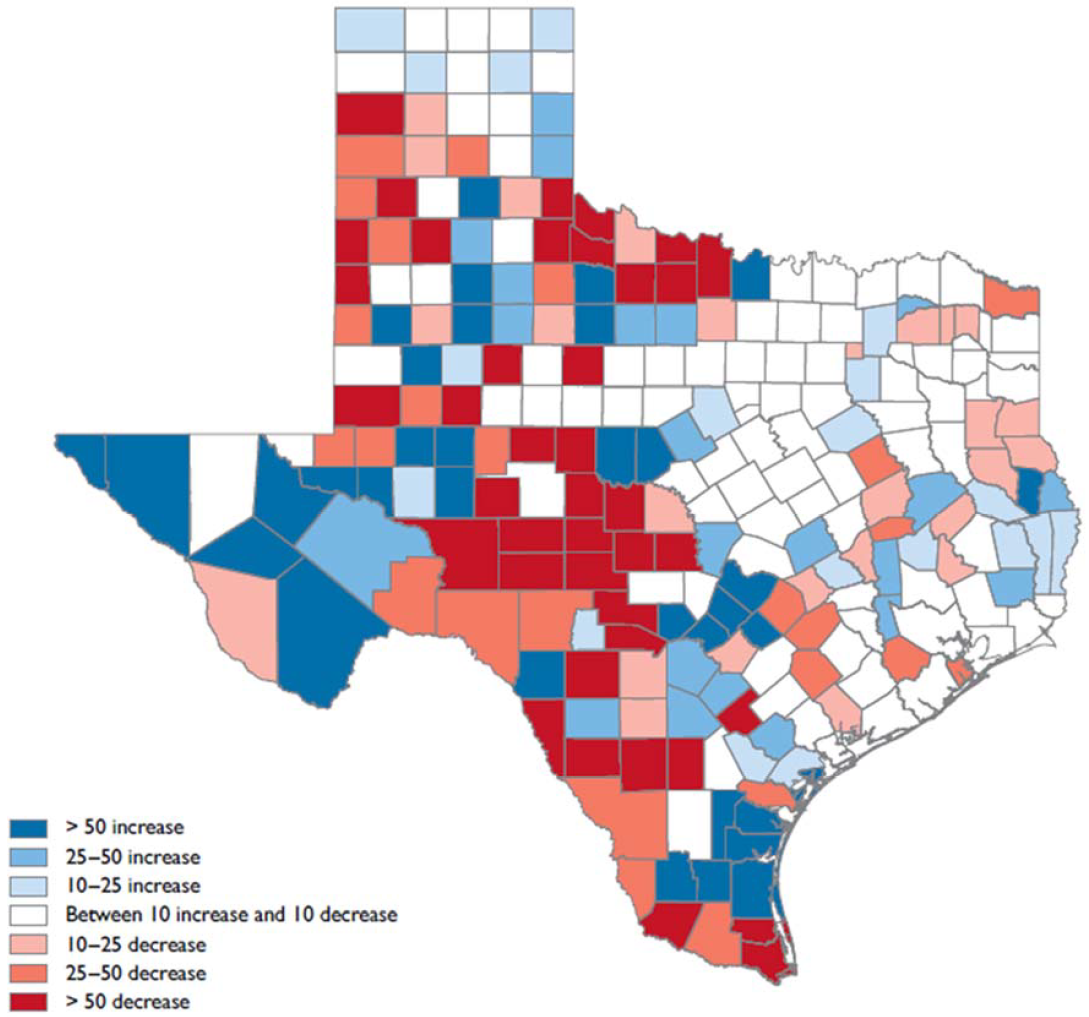Exploring Groundwater Recoverability in Texas

Change in groundwater availability by county from the Texas state water plan for 2012–2017.
In 2017, the Texas state water plan projected a total water supply deficit of 4.8 million acre-feet under drought-of-record conditions by 2020 and a deficit of 8.9 million acre-feet by 2070. These deficits are driven by a growing demand for water (in turn driven by a growing population) concurrent with declining available water supplies.
Reductions in groundwater supply account for 95% of anticipated declines in total water supply, illustrating the importance of management approaches. Some analyses have argued that restrictive groundwater management plans may be creating a regulation-induced shortage of groundwater in Texas. However, the state’s yield estimates supporting these critiques do not account for many of the physical and none of the economic constraints to groundwater recoverability.
Jackson School PhD student Justin Thompson, his advisor Michael Young, and former Bureau researcher Charlie Kreitler have developed a new framework for quantifying the feasibility of groundwater extraction. using aquifer properties, pumping well characteristics, and economic constraints that identify sustainable groundwater withdrawal rates. The framework was tested for an agricultural case on the central section of the Carrizo-Wilcox Aquifer. The framework is capable of identifying the maximum capacity of the well and aquifer to meet demand and the point at which groundwater extraction costs exceed the economic activity. This new framework could provide groundwater conservation districts with a more holistic approach for assessing groundwater recoverability for its stakeholders.
As Texas moves into the mid-21st century with higher water demand and uncertainty in terms of climate and groundwater recharge, improved water resource data will enhance the efficacy of water planning and management.